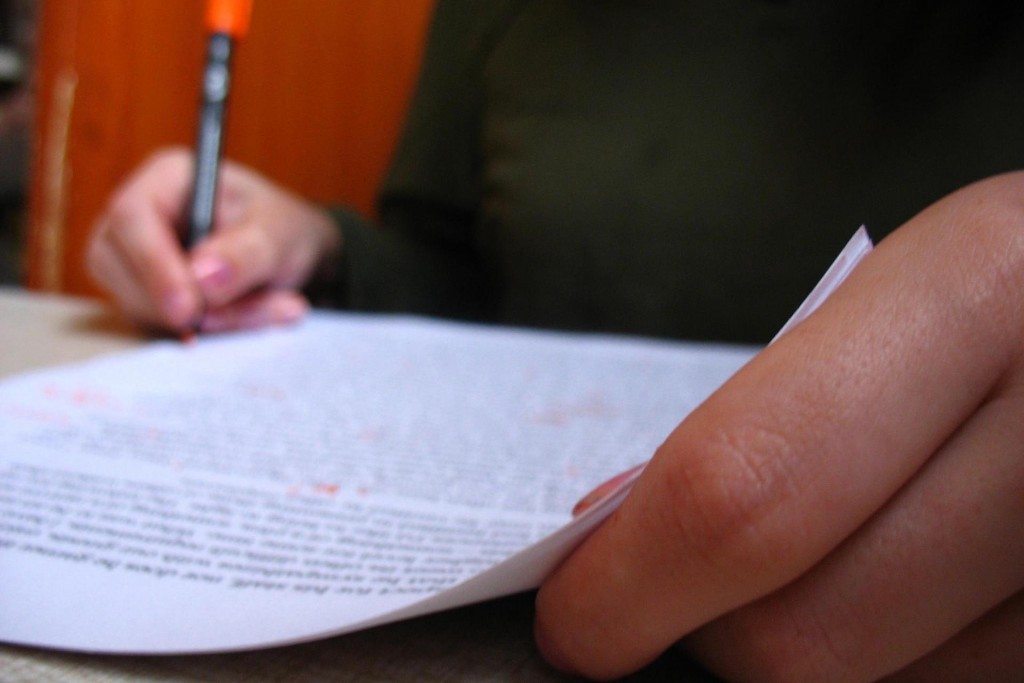Today’s post is written by Mercia Dragonslayer, a semi-finalist in the Write It Sideways regular contributor search. Thanks, Mercia!
With November (National Novel Writing Month) well behind us, thousands of writers are wondering what, exactly, they want to do with their novel.
Some may order a proof copy from a self-publishing company and proudly show it to all their friends. Others may simple post it online, or keep it for private enjoyment. There is always a small crowd that decides to bury it in the closet, never to see the light of day again.
The final option is to edit, edit, edit.
The editing process is painful and difficult. It can be likened to tearing stubbing one’s toe or breaking a fingernail—there’s the big ouch moment before the torment recedes. The light at the end of the tunnel, so to speak, is the beautiful, finished product. Even with this reward in mind, writers have a strange reluctance to revise.
As a reluctant reviser, I use the following seven steps to tame my NaNoWriMo manuscript monster:
1. Finish the novel.
Some people edit as they write, but I find that continually editing kills my love for the story. If this works for you, great! If not, and you are easily distracted, concentrate on finishing the novel. This is the very first step. Once you are finished with this, label it Draft I.
Tech tip: I name each chapter file by draft. The first draft of Chapter One, for instance, might be “Chapter 1 FD.” The second draft would have the suffix SD, then TD, then 4D, then 5D, etc. This way, I can keep all of my files separate and I always know what goes with what.
2. Print it and forget it for a few weeks.
I realize that some people may not have the option to print the entire manuscript, but this is the best way to edit. Words appear differently on the computer screen than on paper. It’s also a lot easier on the eyes than staring at a computer screen all day.
If you wrote the novel by hand: I recommend keeping the paper on which you wrote it as your “printed copy.”
Waiting several weeks (or months) distances you mentally and emotionally from your novel. That way, you see what you really wrote instead of what you meant to write.
3. Make corrections on the paper.
Corrections come in three different types:
- Big Rearrangements: If there are scenes to cut or scenes to add, now is the time to do it. That’s not to say you can’t rearrange in a later draft, but it’s better to decide to take out the Thanksgiving Feast before you spend twenty minutes perfecting the description of the turkey coming out of the oven.
- Small Rearrangements: This paragraph belongs better here, and that section could be deleted entirely–that sort of thing. Don’t bother with these corrections unless you’ve already deleted the scenes you want to delete, or your work could be wasted.
- Consistency Check: Billy Joe Bob is actually named Willy Rob Joe on page 13, and Miss Outlaw uses both meters and yards to describe her archery distances. Reading over the draft to check for consistency is the best way to make sure story elements remain the same throughout the novel.
4. Look for honest feedback.
Find a willing, helpful friend who’s willing to read an awful first draft. The best beta readers are close friends who don’t care about hurting your feelings or complete strangers who also don’t care. An objective point of view finds the plot holes you can’t.
5. Make more corrections.
Take your beta’s suggestions and implement them if you think they help the story. Ultimately, it’s up to you to pick and choose. Then re-read the manuscript aloud, looking for places where the dialogue sounds stilted and stiff.
6. Type up the novel from scratch, using your printed draft & corrections.
If there are any new scenes to add or scenes to take away, now’s the time to implement those changes. Any grammar or spelling you happen to catch can be fixed here, too.
7. Find a proof-reader.
No matter how often a writer reads over her manuscript, a professional proof-reader (or Grammar Nazi parent/friend, if available) will edit more efficiently. Find a free editor lying about? Great! Take advantage of that! If not, it’s a good idea to make some effort to proof read your own novel (no one wants to read even a great story were gramer annd speling r reali bud).
Now, supposedly, at this point the novel could be done. However, since we all know that’s not the case, so I usually keep fiddling around with my own work until I think it’s finished.
As Michael Crichton says, “Books aren’t written–they’re rewritten. Including your own. It is one of the hardest things to accept, especially after the seventh rewrite hasn’t quite done it.”
Editor’s Note: How are you revising your NaNoWriMo manuscript? Are there any vital steps you think should be added to this list?
Mercia Dragonslayer blogs on Slaying Dragons when she has something fun or crazy to say. In 2010, she was published in The Young Writer’s Magazine. She lives in North Carolina with her family and two cats.
